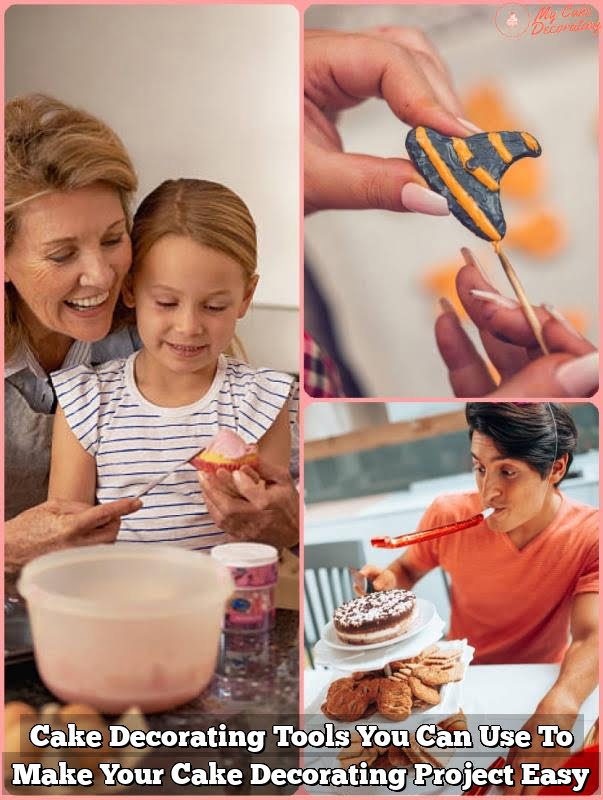Are you trying to figure out how to make a cake flat for decorating? Achieving a level surface is crucial for creating beautifully decorated cakes that are not only visually appealing but also easier to work with.
Imagine the satisfaction of presenting a flawlessly smooth cake, ready for your creative designs and frosting techniques. In this article, we’ll explore the importance of having a flat cake for decorating and provide helpful tips and techniques to achieve that perfect canvas for your confectionery creativity.
The art of cake decorating has become increasingly popular, with enthusiasts finding joy in crafting stunning edible masterpieces for various occasions. Whether it’s a birthday, wedding, or any other special event, an impeccably flat cake sets the stage for impressive decorations that will wow your friends and family. Aspiring bakers and seasoned professionals alike can benefit from understanding the process of creating a uniformly flat cake, adding another skill to their culinary repertoire.
What many people may not realize is that achieving a level cake starts long before the actual decorating process. It begins with choosing the right cake pan, preparing it properly, and baking the batter evenly.
The steps involved in making a cake flat are simple but crucial, as they contribute to the overall success and aesthetic appeal of your finished creation. So let’s delve into these steps in more detail and learn how to ensure your next baking venture results in perfectly level cakes ready for decoration.
Choosing the Right Cake Pan
When it comes to baking a cake that is flat and even for decorating, choosing the right cake pan is crucial. The type of pan you use can greatly impact the shape and height of your cake. One popular option is a light-colored aluminum pan, which promotes even baking and prevents over-browning. Another choice is a heavy-gauge steel pan, which provides durability and ensures that the cake will bake evenly.
In addition to the material of the cake pan, consider the shape and size that best suits your needs. Round cake pans are commonly used for layer cakes, while square or rectangular pans are great for creating sheet cakes. It’s important to select a pan that corresponds with your desired cake shape and size to achieve the best results in terms of flatness and ease of decorating.
For those who prefer extra insurance in achieving a flat cake, there are also pans specifically designed with straight sides to ensure perfectly vertical edges. These pans come in various sizes and materials, allowing bakers to choose the best option based on their specific baking preferences.
| Type of Cake Pan | Advantages |
|---|---|
| Light-colored aluminum | Promotes even baking and prevents over-browning |
| Heavy-gauge steel | Provides durability and ensures even baking |
| Straight-sided pan | Achieves perfectly vertical edges for a flawless finish |
Properly Preparing the Cake Pan
When it comes to baking a cake, properly preparing the cake pan is crucial in achieving a flat surface for decorating. The process of greasing and flouring the cake pan is essential to prevent the cake from sticking, ensuring a smooth release once it’s baked. Additionally, using parchment paper to line the bottom of the cake pan can make removal even easier, preserving the integrity of the cake’s shape.
Greasing and flouring the cake pan involves coating the entire interior surface with a thin layer of butter or oil, followed by a light dusting of flour. This creates a non-stick barrier between the batter and the pan, allowing for easy removal without any damage to the cake.
For added insurance against sticking, lining the bottom of the cake pan with parchment paper is highly recommended. It creates a seamless separation between the cake and pan, preventing any chance of sticking.
In summary, properly preparing the cake pan prior to adding the batter is an important step in ensuring that your cakes come out flat and with perfectly straight edges. By following these simple steps, you can set yourself up for success in achieving a flawless canvas for your decorating endeavors.
| Techniques | Benefits |
|---|---|
| Greasing and Flouring | Prevents sticking and allows for easy release |
| Parchment Paper Lining | Creates seamless separation between cake and pan |
Leveling the Cake Batter
Properly distributing the cake batter in the pan is essential to ensure that the cake bakes evenly and results in a flat surface for decorating. Here are some important tips for leveling the cake batter:
- Use a spatula or spoon to spread the batter evenly across the bottom of the cake pan, making sure it reaches all the edges.
- Gently tap the filled cake pan on the countertop to release any air bubbles trapped in the batter, which can cause uneven baking.
- If using multiple cake pans for layering, measure and distribute the batter equally among them to ensure uniform thickness and even baking.
By taking these steps, you can help prevent a domed or unevenly baked cake. This will provide a solid foundation for decorating and stacking layers if creating a tiered cake.
It’s important to note that different types of batters may require specific techniques for proper leveling. For example, thicker batters might need extra spreading with a spatula, while thinner batters may level out naturally once poured into the pan. Adhering to these guidelines will set you up for success when aiming to achieve a perfectly flat cake surface.
Baking the Cake
Ideal Oven Temperature and Bake Time
To ensure a flat cake for decorating, it is essential to bake the cake at the right temperature and for the appropriate amount of time. The ideal oven temperature for baking a cake is typically around 350°F (175°C). However, this may vary depending on the recipe and type of cake being baked.
It is important to preheat the oven before placing the cake inside to ensure even baking. As for the bake time, this also varies depending on the size and type of cake. A general rule of thumb is to start checking for doneness about 5-10 minutes before the recipe’s suggested bake time to prevent overbaking.
Oven Fluctuations and Uneven Baking
Oven fluctuations can have a significant impact on the outcome of your cake. Fluctuating temperatures can cause uneven baking, resulting in a domed or lopsided cake. To minimize oven fluctuations, it is crucial to use an oven thermometer to accurately monitor the temperature throughout the baking process.
Additionally, rotating the cake pans halfway through baking can promote even browning and rising of the cake layers. By being mindful of these factors, you can increase your chances of achieving a flat cake that is perfect for decorating.
Testing for Doneness
To determine if a cake is fully baked, there are a few methods you can use. One common method is inserting a toothpick or skewer into the center of the cake. If it comes out clean or with just a few crumbs attached, it indicates that the cake is done.
Another way to test for doneness is by lightly pressing on the center of the cake – if it springs back when touched, it is likely finished baking. Keep in mind that these methods may vary depending on the type of cake being baked, so always refer to your specific recipe for guidance on testing doneness.
Using Cake Strips
When it comes to achieving a perfectly level and flat cake for decorating, using cake strips can make a significant impact. These handy tools are designed to insulate the sides of the cake pan during the baking process, allowing for even heat distribution and preventing the edges from baking faster than the center. Here are some key points to consider when using cake strips:
- Insulation: Cake strips are typically made of fabric with an inner layer that retains moisture. When soaked in water before use, they help create a moist and insulated environment around the cake pan, resulting in even baking.
- Preventing Dome Formation: By keeping the edges of the cake pan cooler than usual, cake strips minimize the risk of doming, which occurs when the center of the cake rises significantly higher than the edges.
- Professional Results: Using cake strips can contribute to professional-looking cakes with flat tops, making them ideal for decorating and stacking multiple layers.
In addition to providing insulation and preventing dome formation, cake strips are also relatively easy to use. They can typically be wrapped around the outside of a standard cake pan without any special tools or techniques. With their ability to promote even baking and create flat surfaces, cake strips are a valuable asset for anyone looking to elevate their cake decorating skills.
Flattening the Cake
Techniques for Flattening a Domed Cake
After baking a cake, it is common for the center to rise more than the edges, resulting in a domed shape. There are several techniques that can be used to flatten a domed cake. One method is to carefully slice off the top of the cake using a long serrated knife. It is important to ensure that the knife is held level and to make smooth, even cuts across the top of the cake.
Another technique involves using a cake leveler, which is a tool specifically designed for evening out the surface of a cake. A cake leveler typically consists of a wire or blade that can be adjusted to the desired height. By gently sawing back and forth with the leveler, it is possible to create a flat and even top surface on the cake.
Step-by-Step Instructions for Flattening a Cake
For those who prefer using a knife to flatten their cakes, it is essential to wait until the cake has cooled completely before attempting this process. Once cooled, place the cake on a flat surface and use a long serrated knife to carefully cut off the domed portion of the cake. It may be helpful to rotate the cake as you cut in order to ensure an even result.
If using a cake leveler, adjust it to the desired height and place it flat against the top of the cake. Slowly move it back and forth while applying gentle pressure, allowing it to create an even surface as it cuts through any domed areas of the cake. Take care not to press too hard or move too quickly in order to maintain control over this process.
Necessary Caution When Flattening Cakes
When flattening a domed cake with either method, it is important to exercise caution in order to achieve best results without damaging your baked creation.Other factors in having great results are being gentle with your approach.
By employing these techniques for flattening a domed cake after baking,you would surely amaze how wonderful your decorated finished product will look like.
Conclusion
In conclusion, achieving a flat cake for decorating is essential for creating professional-looking and beautifully finished cakes. By selecting the right cake pan, properly preparing it, and using techniques such as leveling the batter and using cake strips, bakers can ensure that their cakes bake evenly and without a domed top. These steps are crucial for successful cake decorating and can make a significant difference in the overall appearance of the finished product.
It’s important to remember that baking is both a science and an art, and taking the time to follow these tips and techniques can greatly improve the outcome of your decorated cakes. By paying attention to every detail from selecting the right pan to properly preparing it, you’re setting yourself up for success in your cake decorating endeavors. With practice and consistency, achieving a flat cake for decorating will become second nature.
So whether you’re a novice baker or have been baking for years, don’t underestimate the impact of having a flat cake when it comes to decorating. By implementing the suggestions outlined in this article, you’ll be well on your way to consistently creating perfectly flat cakes that serve as a blank canvas for your creative decoration ideas. Happy baking and decorating.
Frequently Asked Questions
How Do I Stop My Cake From Doming?
To stop your cake from doming, you can try a few different methods. One option is to lower the oven temperature slightly and bake the cake for a longer time to allow it to rise more evenly.
You can also try using cake strips or a wet towel wrapped around the outside of the cake pan to distribute the heat more evenly. Additionally, ensuring that your oven is properly preheated and not opening the oven door too often during baking can also help prevent doming.
How Do You Make Your Cake Flat?
Making your cake flat involves a few techniques to ensure an even rise and surface. First, make sure to properly level off your cake batter in the pan before baking – you can do this by smoothing it with a spatula or gently tapping the pan on the counter.
Another method is to use bake-even strips or moistened towels wrapped around the outside of the pan to keep the edges from baking faster than the center. Finally, double-check that your oven temperature is accurate and bake at the correct temperature to avoid any uneven rising.
How Do You Keep a Cake From Rising in the Middle?
Keeping a cake from rising in the middle can involve several strategies. One approach is to create a slight indentation in the center of the batter before baking, which will encourage it to rise more evenly across the entire surface.
Another method is using a flower nail placed upside down in the center of larger cakes, which helps conduct heat into the middle for more even baking. Additionally, be sure not to overmix your batter or overfill your pans, as these factors can contribute to a higher middle when baking a cake.

Welcome to my blog about home and family. This blog is a place where I will share my thoughts, ideas, and experiences related to these important topics. I am a stay-at-home mom with two young children. I hope you enjoy reading it! and may find some helpful tips and ideas that will make your home and family life even better!





